Common Grilling Mistakes and How to Avoid Them
Although grilling has long been thought of as the “man’s domain,” there are plenty of reasons why both men and women would want to get out in the sunshine, drink a cold, frosty beverage, and do some grilling. So today I’m going to show you how to grill by looking at common grilling mistakes.
Consider the extra energy it takes to cool the house in the summertime when the oven and stove are both on. Save some money and take the heat outside.
One of the most compelling reasons to grill, however, might be the social perks. Families and friends are often so busy that nobody eats together anymore. Pull out the grill, though, and everybody gathers around.
Grilling brings family and friends together. Whether you are cooking on a gas grill or a charcoal grill, get out there and get grilling.
Grilling is not only one of the oldest forms of cooking, it also has great benefits in today’s world as well. Grilling is a direct heat, dry cooking method that, when done correctly, can result in a perfectly seared exterior and a moist and juicy interior.
Grilling is a quick cooking method and a very healthy way to cook. It requires very little added fat, and it makes food taste wonderful. As an added bonus, foods can acquire those professional-looking grill marks—the marks that set you apart as the Master of the Grill.
Unfortunately, for every beautiful piece of grilled fish, meat, fruit or vegetable pulled off the grill, countless pieces have come to an overcooked and unsightly end, all because the cook was practicing how NOT to grill. This section will lead you through all the mistakes people can make when grilling, and how to avoid them.
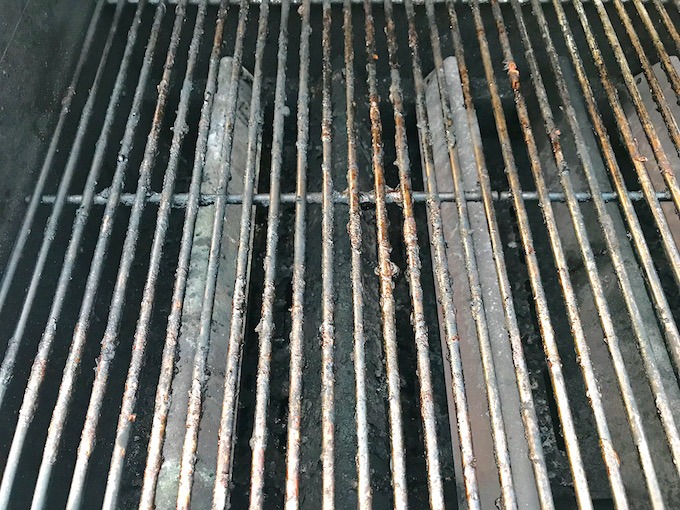
Mistake #1 - The Dirty Grill
Mistake #1 – The Dirty Grill
Contrary to popular belief, a dirty grill does not enhance the flavor of what you’re grilling—in fact, it can inhibit good grilling and negatively affect the taste and quality of your food. Here’s why:
- Residual Buildup
A dirty grill often has layers of old, charred food particles, grease, and carbon deposits stuck to the grates. These remnants do not add a “smoky” or “grilled” flavor; they burn when heated, creating bitter and unpleasant flavors that can transfer to fresh food. The buildup can even release harmful compounds when reheated, affecting the safety of the meal. - Uneven Heat Distribution
A grill with a layer of grime and grease will not heat evenly. Old food particles and residue block the proper airflow and create hot spots or cooler areas, which means your food may cook unevenly. This makes it harder to achieve a perfect sear, consistent cooking, or proper caramelization on meats and vegetables. - Stickiness and Poor Presentation
A dirty grill grate can cause food to stick, making it difficult to flip or remove items without tearing them apart. This not only affects the texture and appearance of your food but also makes cleanup even harder.
A clean grill ensures better flavor, even heat distribution, and non-stick cooking, leading to tastier and more professional-looking results. Regularly cleaning your grill is essential for successful grilling!
The Fix
Cleaning a dirty grill and preventing future buildup are essential steps to ensure great-tasting food and proper grill maintenance. Here’s how to clean your grill and keep it in good shape:
Pre-Cleaning: Burn Off Residue
- Heat the Grill: Before cleaning, preheat the grill on high for about 10-15 minutes. This will burn off any food particles and grease, making cleaning easier.
- Turn Off the Grill: Once the food remnants are charred and loosened, turn off the grill and allow it to cool slightly.
Scrape the Grates
- Use a Grill Brush: With the grill still warm but not too hot, use a stiff wire brush or a grill scraper to scrape the grates, removing burnt-on food and grease. Scrub in long, firm strokes along the grates.
- Brush Both Sides: Flip the grates over to clean the underside, which can also collect debris over time.
- Alternative Tool: If you don’t have a wire brush, crumpled aluminum foil held with tongs can work as a makeshift scraper.
Clean the Interior
- Scrape the Interior Walls: Over time, grease and carbon buildup can collect on the grill’s interior walls. Use a putty knife or scraper to remove these layers of buildup.
- Empty the Drip Tray: Check and empty the drip tray regularly. Clean it with warm, soapy water to prevent grease fires and unpleasant odors.
Clean the Grill Grates
- Soak in Soapy Water: For a deeper clean, remove the grates and soak them in warm, soapy water for 15-30 minutes. This will help loosen stubborn grease.
- Scrub with a Sponge: After soaking, scrub the grates with a sponge or scouring pad to remove any remaining residue.
- Rinse and Dry: Rinse the grates thoroughly with water and dry them completely to prevent rust.
Clean the Exterior
- Wipe Down the Exterior: Use a soft cloth or sponge with warm soapy water to clean the outside of the grill. This keeps the grill looking clean and prevents dirt buildup.
- Stainless Steel Cleaner: If your grill has stainless steel components, use a stainless steel cleaner to keep the surface shiny and free of streaks or fingerprints.
Prevent Future Buildup
- Clean After Each Use: The easiest way to prevent a dirty grill is to clean it after each grilling session. Scrape the grates after cooking while the grill is still warm to remove food residue before it hardens.
- Oil the Grates: Before cooking, lightly oil the grill grates with a high-heat cooking oil (like canola or vegetable oil) using a paper towel and tongs. This helps prevent food from sticking and reduces residue buildup.
- Cover the Grill: When not in use, cover your grill with a weatherproof grill cover to protect it from dust, dirt, and environmental elements that can contribute to grime.
Regularly cleaning your grill and maintaining proper hygiene will enhance the flavor of your grilled food, prolong the life of your grill, and reduce the risk of harmful buildup. With these easy steps, you can prevent your grill from getting dirty and keep it in peak grilling condition all season long!
Mistake #2 - The Cold Grill
Here’s one scenario I often hear about: home cooks get their coals or heat to the perfect point, put the grate over the coals and then slap on the meat. This is what happens: their food gets stuck.
This is why it happens: all metal, no matter how smooth to the eye, has microscopic pits and crevasses in it. These are the perfect little nooks and crannies for proteins in your cooking food to get down into and glue themselves to the metal.
The Fix
Give your grill a good 10 minutes or so to heat up over the coals before putting on the food. This gives the metal a chance to heat up and expand. The expansion helps to close all the microscopic divots in the metal making a truly smooth cooking surface.
Mistake #3 - The Un-Oiled Grill
Your grill grate is clean and hot. When you put food—especially a protein like meat or fish—on the grill, it immediately sticks. Even with the metal hot and many of those little microscopic crannies closed up, your food is now stuck!
The Fix
Starting with a clean grill + lubricating the grill with a little oil = seasoned grill = food doesn’t stick.
Just like your grandmother’s cherished cast iron skillet, years of proper use and care will season your grill, giving it an almost non-stick coating.
Many people advocate oiling the food, but that takes more oil and won’t help season the grill grate. Take a clean towel tightly wrapped and dipped in canola oil and use long handled tongs to rub a light coat of oil on the pre-heated grill grate.
Mistake #4 - The Over Crowded Grill
You have steaks, burgers, dogs and brats covering every square inch of your grill grate, and you have a flare-up. Where do you move the meat to keep it from charring?
You could move some food temporarily to a plate, but then you end up with temperature issues – you don’t want your food to cool down in the middle of the cooking process.
You could just let the flare-up flare, but that deep char is really not what perfect grilling is all about, besides, carcinogens have been identified in deeply charred meat. What do you do?
The Fix
Just as overcrowding a pan is not good for browning meat—you end up with a steam rather than a sear, overcrowding is the enemy on the grill. To adjust to flare-ups and to be able to move your food around from hotter to cooler parts of the grill, it’s best to keep a good one third of your total grilling area clear.
Remember, even as heat is transferred from the grill to the food, it is a two-way street. The food cools down the grill. This is why grill marks are more pronounced on the first side of the food rather than the flip side.
When it comes to grilling, heat is your friend, so make sure there is plenty of free space on the grill to move the food so the grill has a chance to heat up again. That’s one way to try and equalize those grill marks.
Mistake #5 - Not Ready for the Flames
The USDA does not want you to ever leave meat out on the counter. Many chefs will say that it is necessary to let food come to room temperature before cooking.
The reason for this is two-fold: putting cold food on a hot grill will actually bring down the temperature of the grill temporarily, and you could have some problems with sticking. The second problem is with heat control in the food itself, especially when dealing with a thick cut. If you put a cold piece of meat on the grill, the inside will still be cold when the outside is done.
The Fix
Of course I don’t advocate leaving meat out in the hot sun, or even in a kitchen, all day to come to room temperature. What I do advocate is giving the food some time on the kitchen counter (depending on the thickness) to let it warm up a bit—up to 30-45 minutes or so for thinner cuts and longer for larger, thicker cuts and roasts.
Refrigerators hold food at temperature of about 40 degrees, and a rest on the counter will take the chill off, leading to a tenderer, more evenly-cooked end product. If you are concerned about bacterial growth, rest assured that grilling will take care of that problem in short order. If you’re still concerned about it, follow the USDA recommendations.
Mistake #6 - The Constant Mover
You put your food on the grill and then move it. Two seconds later, you move it again. Then you flip it, move it, flip it again, and move it again. Spray some water at a flare-up and poke at the food.
Then you move it. Then you…you get the idea. At the end, you are left wondering why you don’t have beautiful grill marks on your food and why it doesn’t have a good sear.
The Fix
Heat is amazing – it transforms food, but even the relatively high and direct heat of the grill needs some time to work its magic. Put the food down on the grill grate, and give the heat time to give a beautiful sear. Give the grill grate time to imprint those grill marks.
While I’m not saying to walk away to check your e-mail, I am saying to watch carefully, but trust that the heat will do its job. Even fish can stand to be on the grill for a good minute or so before being moved, so relax and let it happen.
Mistake #7 - The Second Guesser
You are so concerned about overcooking that beautiful steak that you take it off the grill early and cut into it, only to find cold purple meat in the middle. You put it back on the grill, and now you end up overcooking it. Great.
The Fix: Instant Read Thermometer
Take the guesswork out of doneness: make sure to check the internal temperature of what you’re cooking with an instant read thermometer. There are many ways to tell if meat is done, but for the occasion weekend griller, the only way to be sure is to use a thermometer.
Pay attention to what you are doing, don’t walk away, and check that temperature. Over time, you’ll get a sense when grill so all you need is a quick touch with your finger to know if the meat is done to your liking.
Sub-Mistake – The Cutter
Never cut into your meat to see if it is done. Use an instant-read thermometer. If you don’t, some of the juices will run out, and you’ll end up with dry, tasteless meat.
Mistake #8 - The Over Eager Griller
The steak is beautiful, and the instant-read tells you it’s at the perfect temperature. You put the meat on a plate and immediately cut into it. All the juices run out of the meat onto the plate, leaving you with a dry, sad cut.
It is now mysteriously looking overcooked. What did you do wrong?
The Fix
This comes down to carry-over cooking and resting. Just because you’ve taken your meat off the grill doesn’t mean that the internal temperature won’t continue to rise.
The heat that was at the surface when the meat left the grill will continue to travel through to the center, raising the temperature. That’s what heat does. It doesn’t get sucked back up into the fire, it continues to cook the meat.
Remember that food will continue to cook for a couple of minutes for thin cuts and up to 45 minutes or so for very dense foods (think turkey and large roasts), and take the food off the heat a few degrees before you reach your target temperature.
Cover your food and let it rest for 5-10 minutes for smaller, thinner cuts and up to 30-40 minutes for larger cuts. This rest time allows the thermal transfer to equalize and the juices to redistribute.
A few minutes of patient waiting will yield a perfectly cooked, juicy and tender result.
Mistake #9 - The Flamethrower
You have a grill capable of throwing tens of thousands of BTUs. You crank it up to high, put the food on the grill and end up with a charred exterior surrounding a raw interior.
The Fix – Heat Zones
Just as you turn your knobs on your stoves up or down depending on if food is cooking too quickly or slowly, you should practice modulating the heat on your grill. While it is not convenient or even feasible to turn the heat up or down on the grill or to try and add or take away coals if you are using a charcoal grill, it is possible and recommended that you have three heat zones on your grill.
On a gas grill, this is as simple as setting your grill dials at high, medium or low. On a charcoal grill, it requires some pre-planning.
One zone will be set up for high-heat cooking—the sear on the outside of your meat. You want your charcoal to be very close together and piled two high in this zone.
You will use the middle zone for the bulk of the cooking, with the lid down. In this zone, set up the charcoal evenly spaced and in one layer.
Don’t put any charcoal in the third zone. This will be the area where you move the meat to finish off cooking slowly. Remember, for thin food, zone grilling is not so much of an issue, but if you are going to be grilling larger cuts, use the zone method.
Sear and get your grill marks in Zone 1, do the bulk of the cooking in Zone 2, and let the meat “coast” in Zone 3.
Mistake #10 - The Bland Griller
Grilling is a great way to impart flavor to foods. Cooking with direct flame intensifies flavors. There are lots of ways to bring extra flavor to the table when grilling, and I encourage you to try them.
Even if you are interested in low-fat cooking, this doesn’t mean low flavor cooking. There are plenty of low fat ways to bring on the flavor. Don’t just throw unseasoned meats or vegetables on the grill and suffer because you’re eating healthy—dial up the flavor and enjoy your healthy meal.
The Fix
Try one of these ways to add flavor to your grilled foods. Keep in mind that these ideas can be adapted for use on meats, fish, vegetables and fruits.
The marinade: mix up a flavorful soaking liquid based on an acid (lemon juice, vinegar, wine, even yogurt) and put your food in to marinate. Vegetables and seafood might only need a 15 minute marinade, but larger or tougher cuts can take up to 24 hours in a marinade.
Check on marinating times for the particular food you want to add flavor to—too much marinating time can start to break down the food and make it a little mushy. Add whatever you like to your marinade—salt and pepper are always welcome additions, but add garlic and any herbs or spices that complement your dish.
Some people add oil to their marinades, but this not strictly necessary, especially if your goal is to reduce fat consumption. Do your marinating in the refrigerator, and throw away any unused marinade.
The spice rub: This is just what it sounds like, a dry mix of spices that you rub on the food before grilling. Rubs are generally based on a sugar and salt mixture to which you can add any spices or herbs that you desire.
While you can apply a rub right before grilling, you’ll get better flavor if you let your rubbed food sit in the fridge for a while. To really bring out flavor, you can apply a rub to something that you’ve marinated. Just make sure that the flavors in the rub go well with the flavors in the marinade.
Another great way to bring some flavor to grilling, especially if it’s a large cut that will be on the grill for a while, is to add some soaked wood chips or soaked bundles of herbs directly to the coals. The steam and aromatic smoke will lend an additional layer of flavor to your grilled food.
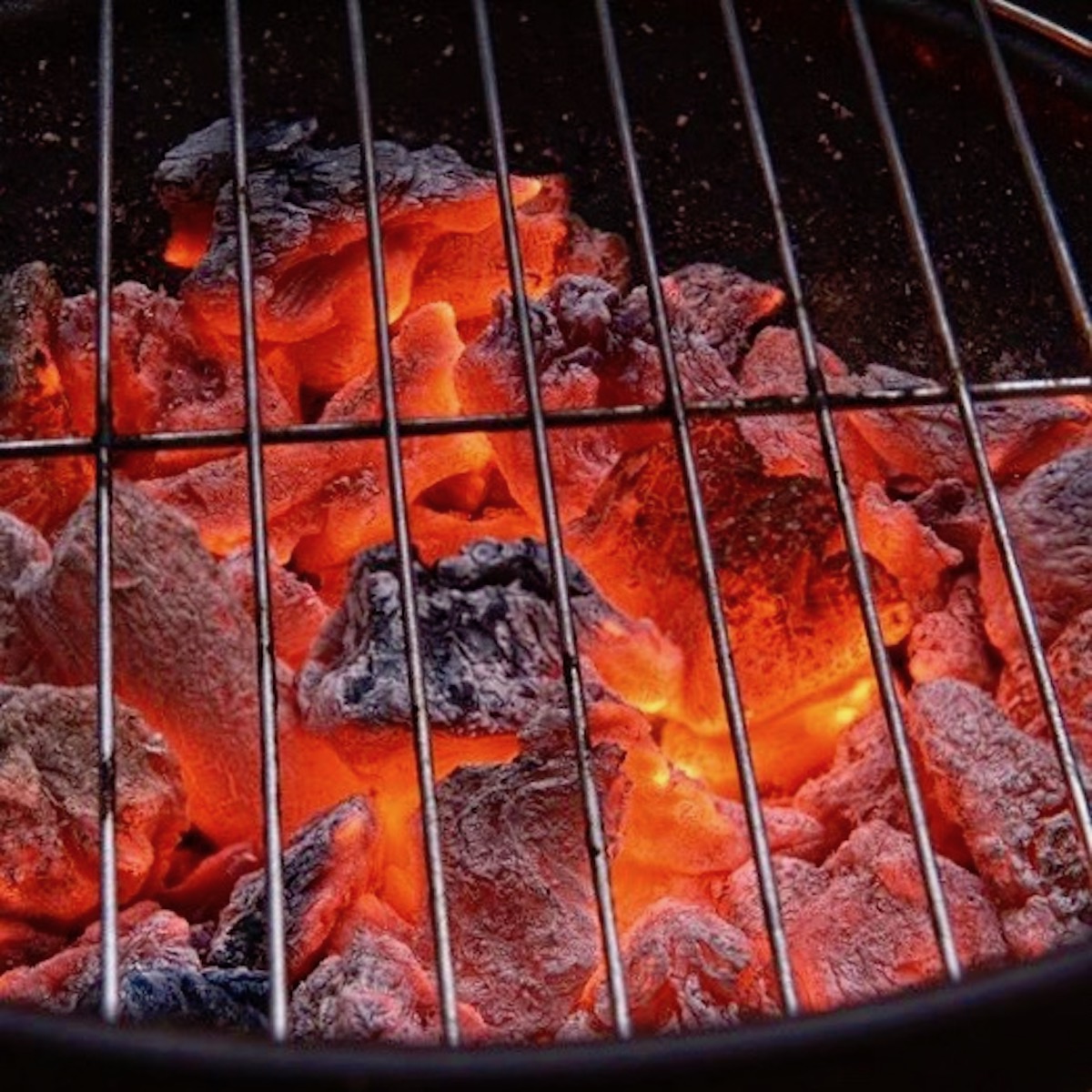
Mistake #11 - The Sauce Slosher
You have marinated a lovely chicken. You’ve applied a rub. You have bundles of soaked rosemary stems ready to throw on the coals. Your three zones are all set up.
You slather on barbecue sauce, put the meat on the grill, and the sauce immediately begins to burn. By the time the meat is done, the exterior is completely black, and you’ve been fighting flare-ups the whole time.
The Fix
One of the first ingredients in almost every commercially available barbecue sauce is sugar or corn syrup. If cooked for too long, sugar burns.
The trick is to get the sugars in the sauce to caramelize at the right time so that whatever you are grilling is done before the sugars start to burn. It is better to start your meat without the sauce and only baste with sauce during the last 10 minutes or so of cooking.
This way, the sugars will caramelize beautifully and will begin to set up while the meat is resting. The result—tender juicy meat with finger licking gooey sauce. You can pass extra sauce at the table, but it won’t taste the same because the sugars in the extra sauce haven’t caramelized.
Mistake #12 - The Wrong Grill for the Right Job
You have a great gas grill, and you want to use it for everything. Texas-style barbecued brisket, you think. Understand that my official definition of barbecue is meat cooked very low and very slow with hot smoke from an indirect source.
Gas grills are great for high heat and zone grilling, but they don’t do low and slow very well, and they don’t make smoke. Okay, you think—smoked salmon. Again, a gas grill isn’t made to smoke. You can make it smoke, but that’s not what it is designed for.
The Fix
If you have your heart set on smoking meats, or vegetables for that matter, I wish I could tell you that there is a way to convert your gas grill, and there might be, but honestly it is best to get the right tool for the right job. Buy a smoker.
Mistake #13 - The Briquette Addict
Self-starting briquettes seem so easy to use. Just light them with a match. That’s it. And if they are hard to light, squeeze on some lighter fluid.
No problem, right? Wrong.
Briquettes are made primarily of charred wood and coal, and they are held together with starch binders. They contain lime (which turns white and lets you know when your coals are ready) and are sprayed with an accelerant (lighter-fluid) to make them light easily.
One of the problems with using briquettes is that people don’t wait until the coals are completely ready before putting the food on the grill. Some of the impurities used in producing the briquettes are then cooked into your food.
The Fix
Although briquettes do burn longer, for the sake of your health and for flavor, I recommend using natural lump charcoal for grilling. You don’t need any lighter fluid to light it. All you need is a $10-$15 chimney starter, available at any hardware or home improvement store.
Crumple up 2 full sheets of newspaper. Put these in the bottom of the chimney starter, under the grate. Fill the chimney with the lump charcoal, and then light the paper.
Place the chimney on the bottom (small) grate of your charcoal grill, and wait until the coals are glowing cherry red. This will not take long at all.
I was amazed at how efficient a chimney starter is the first time I used one. Handle the chimney starter with heavy duty gloves and make sure you have a heat-proof surface to put it on after the coals are hot and you’ve put them in the grill.
Mistake #14 - The Stabber
When you went to the store to get your grill, the salesman up-sold you with a nice set of long-handled grilling tools. You got tongs, a really long fork, a really long spatula and a grill brush.
The first time you grill and it’s time to turn the meat, you reach for the really long fork, stab the meat and turn it over. You have a lot of mysterious flare-ups, and after checking the temperature with your instant read thermometer and letting it rest the appropriate length of time, you are surprised when you cut into it to find dry, tasteless meat.
The Fix
Throw the fork away. Always, always use a spatula or tongs to turn food on a grill. After all, once the meat is dead, it’s dead. No need to kill it again.
Although we know that searing doesn’t really lock in the juices, stabbing the meat with a fork or a knife will allow the hot juices to run out. And once, they’re gone, they’re gone.
Mistake #15 - The Full Court Press
“If he won’t let me use my fork, I’ll use my spatula! I’ll just press this chicken breast down so it makes better contact with the grill.”
Wait a minute, do you hear that increased sizzle and see the flare-ups? That sizzle is not the satisfying sound of grilling meat, it is the sound of juices being pressed out with the spatula. The result—dry, tasteless meat.
The Fix
Spatulas are made for turning, not pressing. Put it down unless it’s time to turn the food.
Your food is made up of cells that you have taken great pains to keep full of flavorful juices. You might even have introduced more juice and flavors through brining and/or marinating.
Now the food is like a sponge – full of flavor and juices. The last thing you want to do is squeeze them all out by pressing on the food. Just leave it alone.
Mistake #16 - The Wanderer
As I said in the introduction, grilling is a quick cooking method. Food generally goes from raw to cooked fairly quickly and can just as quickly go from perfectly cooked to burnt.
Don’t go wandering away from the grill to grab another beverage, answer the phone or check the laundry—you’ll walk away from near perfection and return to a ruined meal.
The Fix
The easy answer is, “Don’t leave the grill.”
The expanded answer is have your phone by the grill, don’t start laundry before you start grilling, have a cooler by the grill and deputize someone you trust and who knows how to use an instant read thermometer to take over should you absolutely have to leave the grill.
Mistake #17 - The Seasonal Griller
It is a mistake to think that grilling season starts on Memorial Day and ends on Labor Day. Our ancestors didn’t stop grilling just because it got cold, and neither should you.
The Fix
Use your grill at least a few times during the colder months. It is a great way to break up the monotony of heavy winter stews and braises, and it gets you out in the cool, fresh air for a while.
Who wouldn’t want a fresh grilled burger and some grilled vegetables in the middle of January? If it snowed the night before, clear a path to the grill and get started.
Mistake #18 - A Dangerous Maneuver
You have a grilling party planned. The menu is set, the neighbors are here, and it is beginning to rain. You consider bringing the grill indoors.
According to the United States Consumer Product Safety Commission, about 20 people die from grilling-related carbon monoxide poisoning every year. Grilling should ALWAYS be done in a well-ventilated, outdoor environment.
The Fix
Never try to grill inside, even if you think you have good ventilation. If it starts to rain, either stand in it and grill or order pizza. Your health and safety are much more of a concern than is cancelling a party.
How NOT to Cook Topics |
||
| Introduction | Braise | Roast |
| Start a Recipe | Cook Pasta | Saute |
| Season Foods | Grill | Simmer |
| Bake | Pan Roast | Simmer |
| Boil | Poach | Steam |

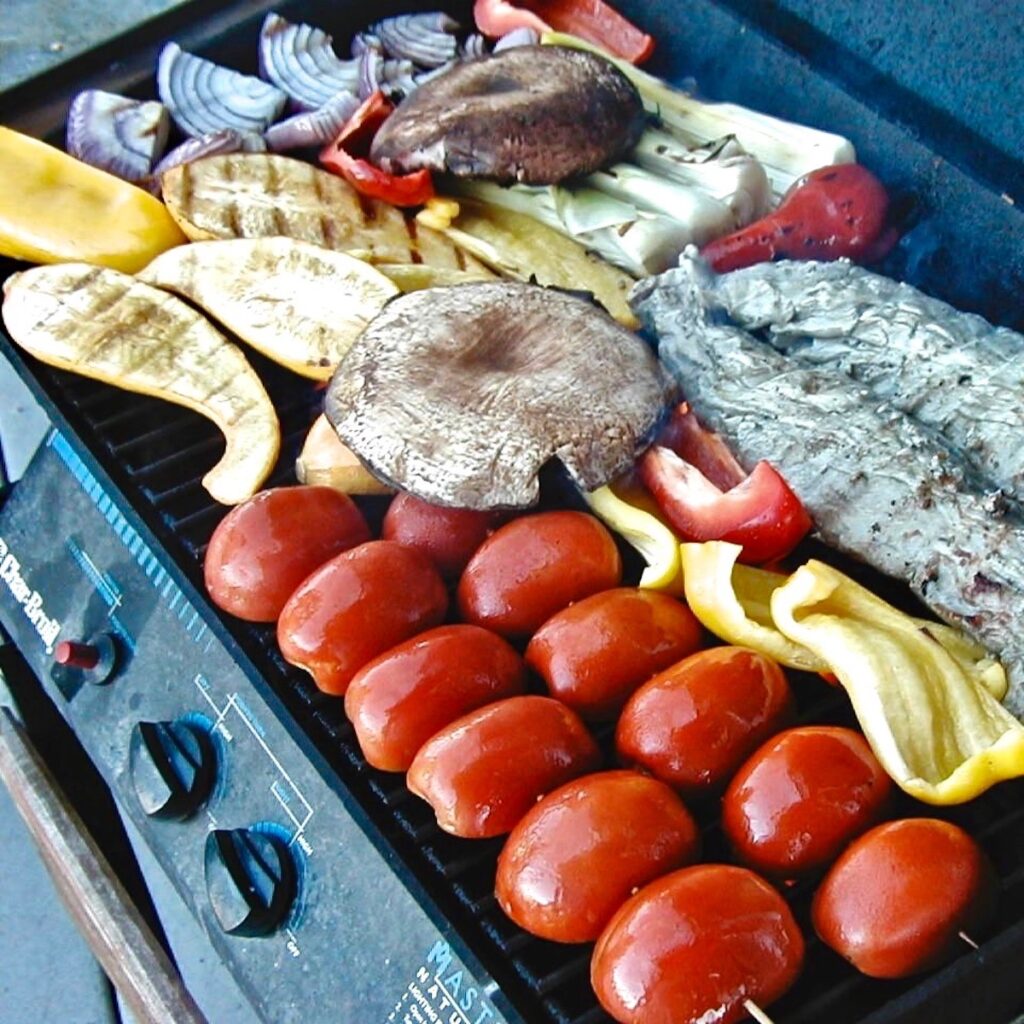
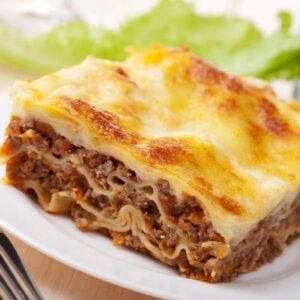
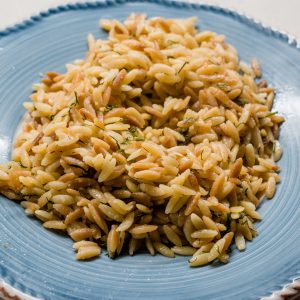




4 Responses
I’m glad you explained that we shouldn’t move the food constantly when grilling it. My husband and I like the idea of having a gas barbecue installed soon. Your advice should help us cook some great food with it after it’s installed!
Hi Eileen, thanks for reaching out.
I have done a lot of grilling over the years but not always successfully. Excellent article, very helpful.
Hi John, I’m glad this post helped.